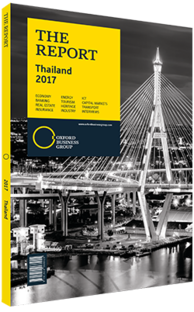Chaipatr Srivisarvacha, CEO, KT ZMICO Securities Company: Viewpoint

Viewpoint: Chaipatr Srivisarvacha
As the hub of ASEAN, Thailand has good prospects with significant growth potential. A large current account surplus and strong international reserves make the country less susceptible to external shocks, while low inflation and a low unemployment rate indicate relatively strong economic fundamentals. Thailand is in a very competitive position, ranked 34th among 138 countries, ahead of other ASEAN nations except Singapore and Malaysia, according to the World Economic Forum’s “Global Competitiveness Report 2016-17”.
Thus far, the government has done a good job at stabilising domestic politics and improving social welfare. It has a strong commitment to creating a friendly environment for both foreign and domestic investors through the promotion of economic development and enhancement of the country’s competitiveness. As cost advantages such as wages are being eroded in Thailand, especially compared to neighbouring countries Cambodia, Laos, Myanmar and Vietnam (CLMV), productivity gains will become more important.
The launch of the Thailand 4.0 initiatives, which aim to create stability, wealth, and sustainability, will result in opportunities for Thailand. In the new normal of the so-called value-based economy, the engines of growth will shift to smart farming, high-value services and technologically advanced creative and innovative manufacturing practices. The government has identified 10 targeted industries that will be given investment privileges. These include five existing industrial sectors, which are next-generation automotive; smart electronics; high-income tourism and medical tourism; efficient agriculture and biotechnology; and food innovation, in addition to five additional growth sectors, namely, automation and robotics; aerospace; bio-energy and bio-chemicals; digital; and medical and health care.
In order to move into the innovation-driven growth phase that will help the country break out of the middle-income trap, it will be necessary to focus on continued infrastructure development and economic reforms promoting the digital economy. The BT2.3trn ($64.8bn) transportation action plan for 2016-17 with 56 priority projects is tangible evidence that good progress is being made. In 2016, four projects are already under construction, with a total investment value of BT45bn ($1.3bn). Additionally, the government is promoting 10 special economic zones along the border, as well as the Eastern Economic Corridor (EEC), with the aim of fostering local economic opportunity and encouraging urbanisation. The EEC is the former Eastern Seaboard, the region’s powerhouse for manufacturing and trade for the last several decades. If everything goes according to plan, the government of Thailand expects GDP growth to reach 5-6% in 2021, with per-capita income anticipated to increase to $8200. It seems we are finally starting to see the light at the end of the tunnel with respect to Thailand taking advantage of the economic opportunities available to it.
Compared to the CLMV, the Thai equity market remains the most attractive. It has the largest market capitalisation and highest average daily turnover, at $410.8bn and $1.4bn, respectively. Furthermore, the brighter outlook for global crude oil prices, which are expected to bottom out in 2016 and continue to recover, will boost Thailand’s energy industry – the sector with the biggest market cap in the region. The industry currently accounts for only 19% of total market cap, which is much lower compared to 36% in 2007.
One of the key drivers is the renewable energy sector’s concrete expansion plan. The government is aiming to double installed capacity in the next 20 years, and this will spur an investment of around BT20bn ($563.4m) per annum. Even though renewable energy stocks are trading at 50 times the price-to-earnings ratio, sector profit will, on average, double in 2017. The Thai tourism and health care sectors are also expected to continue seeing solid growth in earnings per share, underpinned by the government’s long-term plans to promote Thailand as both an aviation and medical hub.
You have reached the limit of premium articles you can view for free.
Choose from the options below to purchase print or digital editions of our Reports. You can also purchase a website subscription giving you unlimited access to all of our Reports online for 12 months.
If you have already purchased this Report or have a website subscription, please login to continue.

